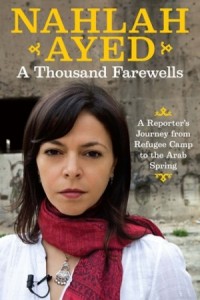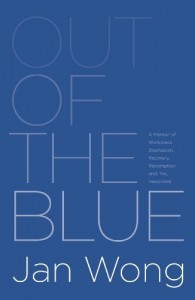Gabriola Island resident George Szanto writes fiction, including mysteries, and nonfiction. His most recent book is Bog Tender: Coming Home to Nature and Memory, a moving collection of essays about time, personal history and the natural world. Szanto was a university professor at McGill University in Montreal for many years but is also an inveterate world traveller. His most recent novel was The Tartarus House on Crab, which (full disclosure) Lynne Van Luven edited. He’s a past winner of the Hugh MacLennan Prize for Fiction and a National Magazine Award recipient. He recently answered Van Luven’s questions about Bog Tender, released in March 2013 by Brindle and Glass Publishing of Victoria.
George, you quote both Henry David Thoreau and Garson Kanin at the outset of your book. Can you comment on Kanin’s observation that “we do not remember chronologically, but in disordered flashes” and its relationship to the way you organized this new book of essays?
I’ve wanted to write about the bog on our property, and about some of the moments that have been the most consequential in my past life. They seemed like two completely different projects, until I found a structure for the bog narrative—since the bog changed so much over the year, I decided to follow its transformations for a twelve-month period. Then slowly, as I thought about each month, it became clear that many of those important past moments could be associated with specific months. Then it became relatively easy to let the months of the year give order to those past bits. On my website I cite the words of one of my favourite writers, Samuel Beckett: “To find a shape to satisfy the mess, that is the task of the artist now.” Kanin says we remember in disordered flashes, and he is correct. But to write a memoir as a series of disordered flashes would be not only uncontrolled, but deadly for the reader. So what I was looking for was a structure that rang true, a kind verisimilitude of disordered remembering, and it became the shape to satisfy my messy memories of past life.
When I finished reading Bog Tender, I thought that it represented rather elegantly the thoughts of a contented man who has lived his life well. Would you say that is accurate, or just a horribly mawkish misunderstanding?
The only misunderstanding there is that you put it in the past tense: I am still living my life well—or at least hope I am. It’s been a very good life, and continues to be. Though I had hoped to be able to write full time and make a living off it from the moment I received my BA, that was not to be. So I spent many years teaching at universities, which I often enjoyed—interaction with often very smart students—and sometimes had a harder time with— noxious administrations and toxic bureaucracies—but wished all the time that I could be writing and making a full living off it. When I retired it became clear that I didn’t need to make writing my financial livelihood, but I could write full time. And I’ve been doing that, and with great pleasure.
When I first saw the title of your book of essays, I took the word “tender” in the sense of loving something tenderly. Now I see you mean it as in “caring for, attending to.” Do you think attending to the natural world comes more essential to writers as they age? If so, why?
I know a number of writers who, as they age, become less and less interested in the natural world. Far from attending, they prefer to avoid it. Personally I couldn’t do that—the natural world (and sometimes even the unnatural world) has been too important to me over my lifetime. Sometimes I find beauty and peace in nature; sometimes too, I have to add, I find squalor and corruption. But the latter two come mostly with the help of some of my fellow humans, both the aging and the young. And then nature truly needs tending.
I’m glad you ask about the title. The original title was Tending Bog, which I liked because it seemed more active. But then it was pointed out to me that if I called it Bog Tender I could bring in, with the pun, the tenderness, the gentleness and fragility of the bog. What never occurred to me, but was pointed out by the National Post reviewer, is that “tender” has a third meaning: tender is money. So I can say my wealth lies in my relation to the bog—it is my liquid tender.
George, I know you always have more than one work on the go. Tell me how many different books you are writing right now, and talk a bit about your writing methods.
For the most part, I find it uncomfortable to talk about present projects; if I talk about a book I’m working on and explain it well, then somehow I come to feel I’ve told that story and now I don’t have to write it. But I can talk about the book Sandy Duncan and I have just finished, the fourth in our Islands Investigations International series, Always Love A Villain, set on San Juan Island. We’ve dealt in the three previous novels with art forgery, transgendering and corrupt sports practices. Villain deals with plagiarism and other forms of intellectual theft. Aside from that, I’m at various stages in two novels of my own, different from what I’ve done in the past. One is an international caper story, the other a large family saga.
As to writing methods: when I’m in the midst of a project I try to write every day. I used to be able to do this for as much as eight hours a day. Now if I can do five, I’m lucky. We have on this property both our house and our guest cottage. The guest cottage is, as you know, on the other side of the bog. I head out to it between 10 and 11 in the morning—in the book I call it my daily commute—and get to work. This usually involves reading and re-writing what I’d done the day before, which also gives me the momentum to continue from there. I do a lot of re-writing, both as I’m going along and after the first draft is done. I know many writers can’t stand rewriting, but for me it’s one of the most rewarding aspects of the project. Writing is hard, facing a blank page or screen. Rewriting becomes a matter of shaping what’s already there, and that gives me great pleasure. I even enjoy (sometimes) cutting, when I can see that the elimination of what might be wonderful passages (but not part of this book) will make the story stronger.
I’ve only been on Gabriola Island a few times since I moved to the West Coast, but it seems to me that you bring your corner of it to life in a most convincing fashion. Do you, like Thoreau, now “derive more subsistence from the swamps . . . than from the cultivated gardens in the village?”
A cultivated anything is a project that’s already done. I get pleasure in the making process, stepping into the unknown, trying something new. Swamps and bogs hide secrets, under their waters they contain mysteries, maybe dangers, much that is invisible to the human eye—often it’s the nose that begins to ferret out all that concealed material. That’s what makes the caper and the family stories intriguing for me—I’ve never tried those kinds of projects before. At least not in print.


